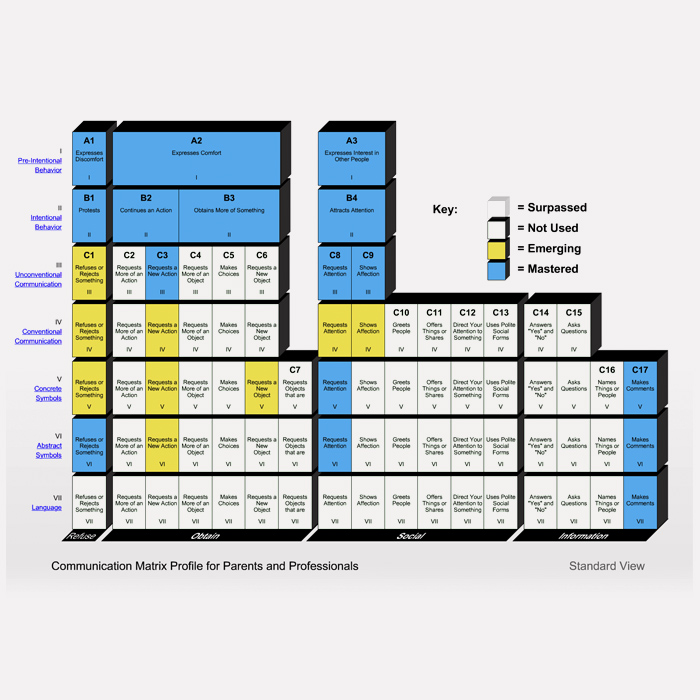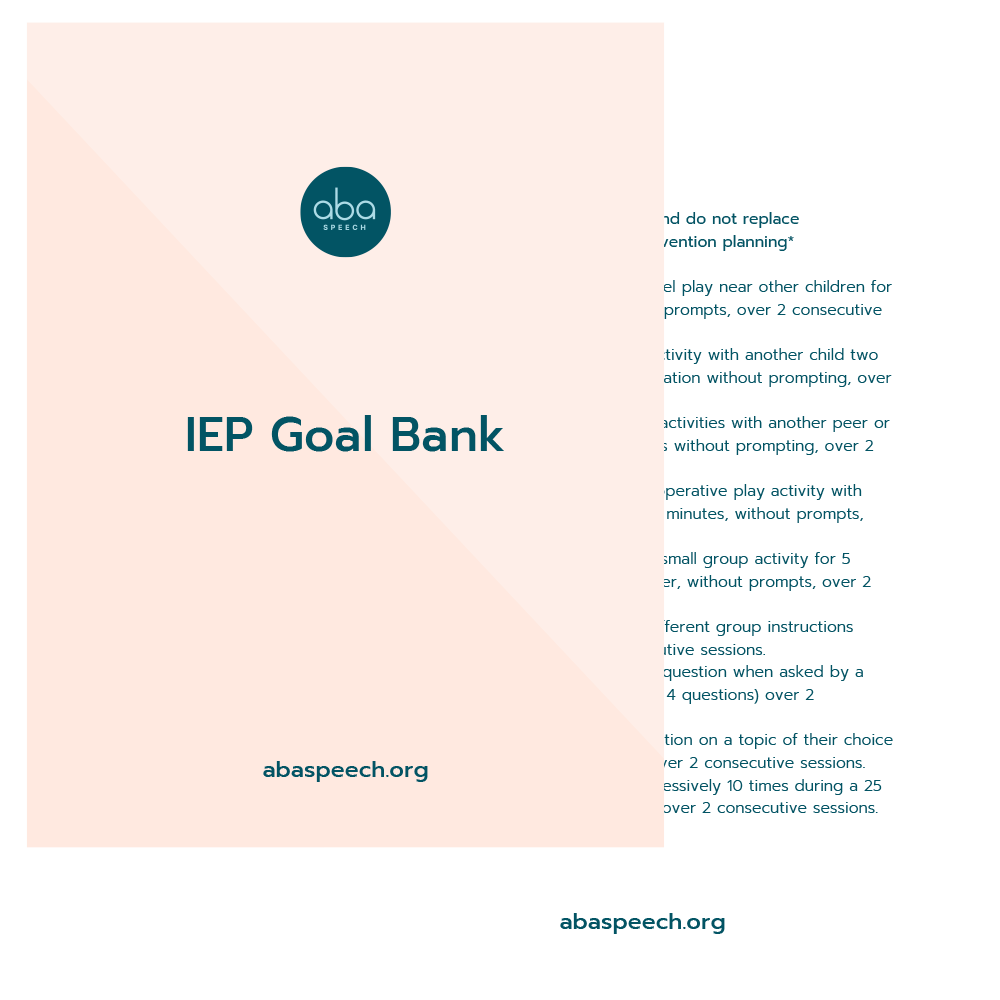Communication is powerful. Many of our autistic learners are not communicating through speech or writing, but are still communicating. How do you determine what goals they should be working on? There is a great tool called the Communication Matrix, that is an assessment for all individuals of all ages at the beginning stages of communication. The stages of the communication matrix would cover skills for a typical 0-24 month old child. The matrix is great because it also allows for AAC devices too! The Communication Matrix is another tool for SLPs and parents too, to have ready to use to help celebrate language progress and create new appropriate goals!

What is the Communication Matrix?
The Communication Matrix is an easy to read one page report that is prepared based on a series of questions you answer about the child. It is based on the four reasons to communicate, to refuse things we don’t want, obtain things we do want, engage in social interaction, and provide or seek information. The questions are clear and easy to follow. The end result is a clear chart that parents or caregivers, and professionals can all easily use to make obtainable goals. Our autistic learners can fall within seven levels, each with clear characteristics, making IEP goals much simpler. You can easily find the Communication Matrix here!
Seven Levels
The 7 levels that students can fall on the communication matrix are really clear and students can build communication skills as they go up in number. All of the information comes straight from the Communication Matrix website!
The first stage is preintentional. For example, if we have students at level one, which means their behavior is preintentional, we do the interpreting. Children here are often not in control. A goal may be, students will turn to stimuli, either auditory or visual. Depending where the child falls on the matrix, there will be a wealth of information to work with!
Level 2 is intentional behavior, but not necessarily intentional in terms of communication. This is when young children use body movements, facial expressions, different noises, and eye gaze to communicate. Caregivers are still interpreting at this stage.
Level 3 is unconventional communication. This is where true communication happens because it is on purpose. However, this communication would not be accepted socially. This is when young children use body movements, facial expressions, different noises, and eye gaze to communicate. Caregivers are still interpreting at this stage. Communicative behaviors include body movements, vocalizations, facial expressions and simple gestures (like tugging on mommy for something).
Level 4 is conventional communication. These are intentional and socially accepted. Communicative behaviors include pointing, nodding or shaking the head, waving, hugging, and looking from a person to a desired object. Clearly this is a bigger jump.
Level 5 is concrete symbols. Some children even skip this stage, but others use this stage solely. This stage includes concrete pictures like a shoelace for a shoe, or gesture symbols like patting a chair to sit or using sounds like buzz for a bee.
Level 6 is abstract symbols. This stage is when we use a system like speech, Braille, or manual signs to communicate.
Level 7 is the final level and this is when children begin to form two-three word sentences and understand the abstract or concrete symbols they are using.
The Communication Matrix includes all forms of communication including, alternative forms (picture systems, electronic devices, voice-output systems, Braille, sign language and 3D symbols) and pre-symbolic communication (gestures, body movement, sounds, eye gaze and facial expressions), as well as typical communication (speech).
Forum
Who doesn’t love a good forum for questions and answers? As a parent or an SLP that is using the Communication Matrix for the first time, there may be questions. Luckily the communication matrix team is pretty phenomenal and has an easy to use forum for questions and answers and really anything related to using or reading the matrix. There are also community pages for all things related to the matrix for parents or providers.
Shared Science
Along with the wonderful tool of the communication matrix, there is even the shared science section on the site, where professionals and family members can add information and data about all different communication disorders. There is a wealth of information about understanding communication in various individuals!
The Communication Matrix is another wonderful tool for SLPs to use and it is easily accessible, low cost, or free, and parents can have a chance to use it too! The site is a treasure trove of information and the matrix results are super easy to use, follow, and create goals from today! Take a look and improve your ability to help those with communication disorders!

0 Comments